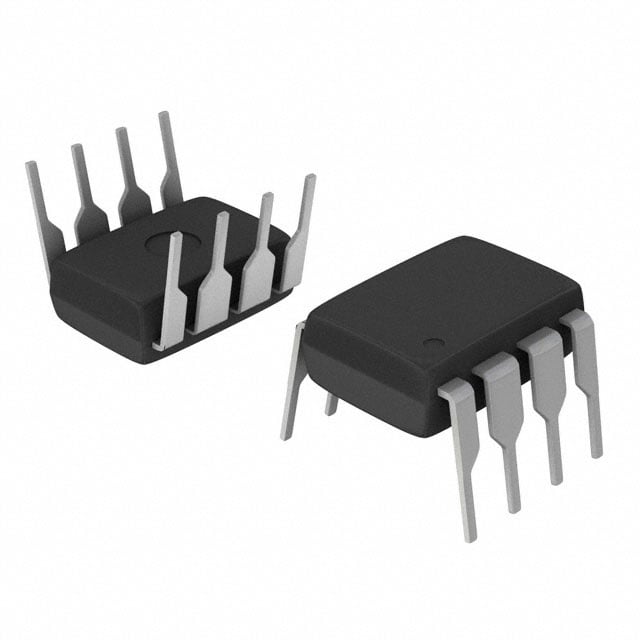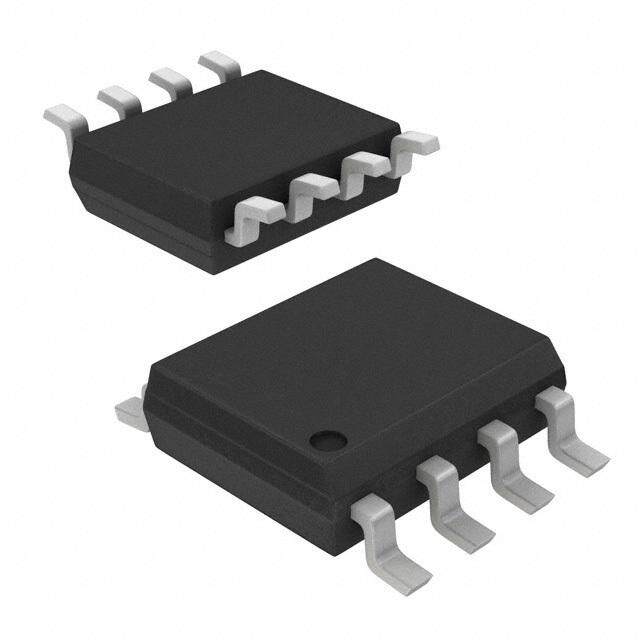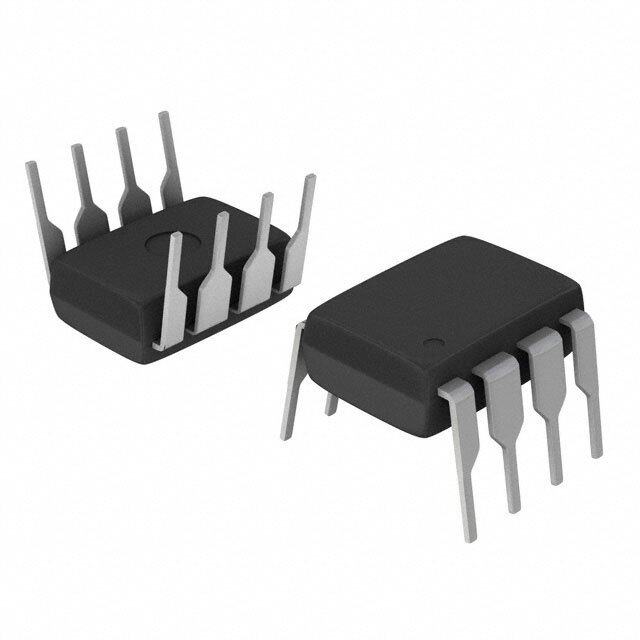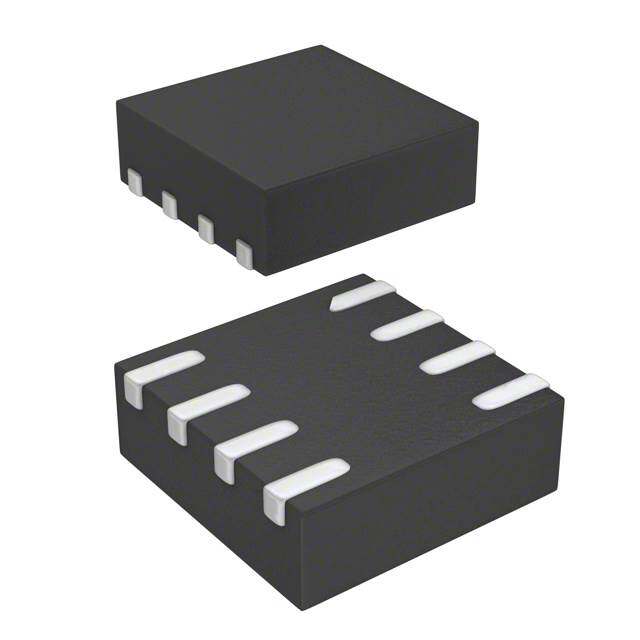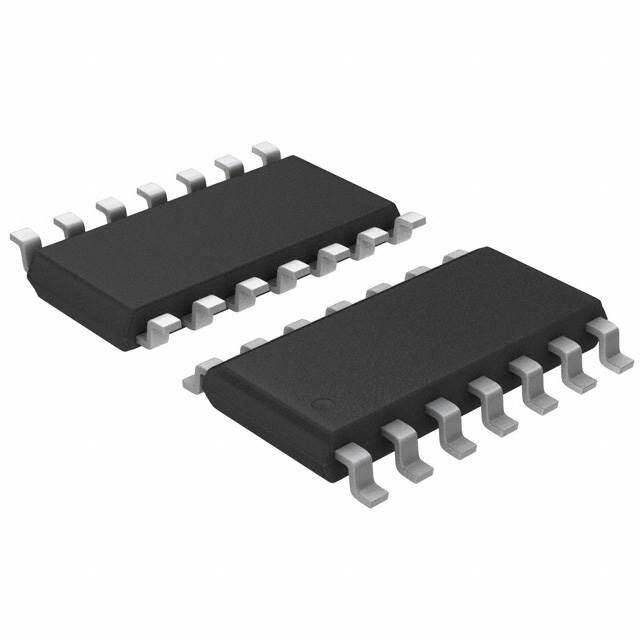ICGOO在线商城 > 集成电路(IC) > 线性 - 放大器 - 仪表,运算放大器,缓冲器放大器 > TLC2654CP
- 型号: TLC2654CP
- 制造商: Texas Instruments
- 库位|库存: xxxx|xxxx
- 要求:
| 数量阶梯 | 香港交货 | 国内含税 |
| +xxxx | $xxxx | ¥xxxx |
查看当月历史价格
查看今年历史价格
TLC2654CP产品简介:
ICGOO电子元器件商城为您提供TLC2654CP由Texas Instruments设计生产,在icgoo商城现货销售,并且可以通过原厂、代理商等渠道进行代购。 TLC2654CP价格参考¥15.75-¥32.13。Texas InstrumentsTLC2654CP封装/规格:线性 - 放大器 - 仪表,运算放大器,缓冲器放大器, 通用 放大器 1 电路 8-PDIP。您可以下载TLC2654CP参考资料、Datasheet数据手册功能说明书,资料中有TLC2654CP 详细功能的应用电路图电压和使用方法及教程。
| 参数 | 数值 |
| -3db带宽 | - |
| 产品目录 | 集成电路 (IC)半导体 |
| 描述 | IC OPAMP GP 1.9MHZ 8DIP运算放大器 - 运放 Low Noise Chopper |
| 产品分类 | Linear - Amplifiers - Instrumentation, OP Amps, Buffer Amps集成电路 - IC |
| 品牌 | Texas Instruments |
| 产品手册 | |
| 产品图片 |
|
| rohs | 符合RoHS无铅 / 符合限制有害物质指令(RoHS)规范要求 |
| 产品系列 | 放大器 IC,运算放大器 - 运放,Texas Instruments TLC2654CPLinCMOS™ |
| 数据手册 | |
| 产品型号 | TLC2654CP |
| PCN设计/规格 | |
| 产品目录页面 | |
| 产品种类 | 运算放大器 - 运放 |
| 供应商器件封装 | 8-PDIP |
| 共模抑制比—最小值 | 105 dB |
| 关闭 | No Shutdown |
| 其它名称 | 296-7334-5 |
| 包装 | 管件 |
| 单位重量 | 440.400 mg |
| 压摆率 | 3.7 V/µs |
| 双重电源电压 | +/- 3 V, +/- 5 V |
| 商标 | Texas Instruments |
| 增益带宽生成 | 1.9 MHz |
| 增益带宽积 | 1.9MHz |
| 安装类型 | 通孔 |
| 安装风格 | Through Hole |
| 封装 | Tube |
| 封装/外壳 | 8-DIP(0.300",7.62mm) |
| 封装/箱体 | PDIP-8 |
| 工作温度 | 0°C ~ 70°C |
| 工作电源电压 | 4.6 V to 16 V, +/- 2.3 V to +/- 8 V |
| 工厂包装数量 | 50 |
| 技术 | LinCMOS |
| 放大器类型 | 通用 |
| 最大双重电源电压 | +/- 8 V |
| 最大工作温度 | + 70 C |
| 最小双重电源电压 | +/- 2.3 V |
| 最小工作温度 | 0 C |
| 标准包装 | 50 |
| 电压-电源,单/双 (±) | 4.6 V ~ 16 V, ±2.3 V ~ 8 V |
| 电压-输入失调 | 5µV |
| 电流-电源 | 1.5mA |
| 电流-输入偏置 | 50pA |
| 电流-输出/通道 | 50mA |
| 电源电流 | 2.4 mA |
| 电路数 | 1 |
| 系列 | TLC2654 |
| 转换速度 | 2 V/us |
| 输入偏压电流—最大 | 60 pA |
| 输入参考电压噪声 | 47 nV |
| 输入补偿电压 | 20 uV |
| 输出类型 | - |
| 通道数量 | 1 Channel |

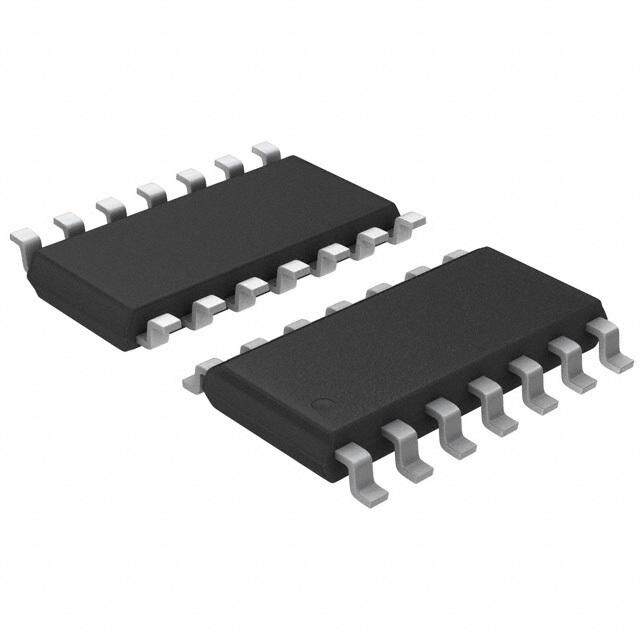

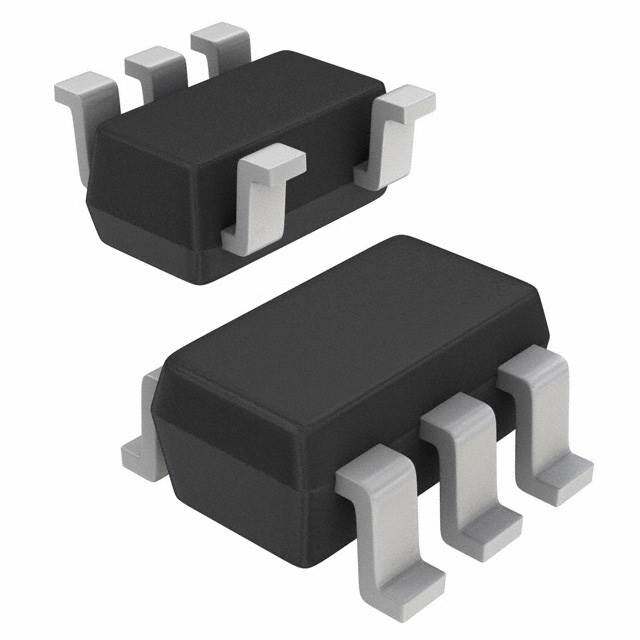
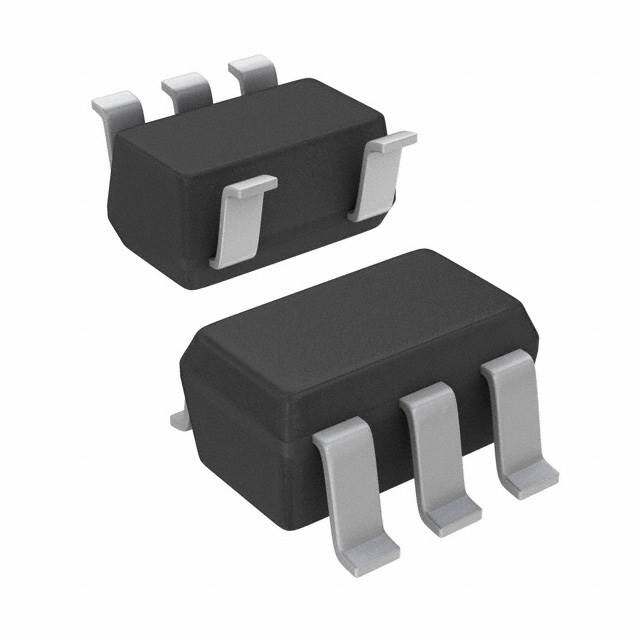
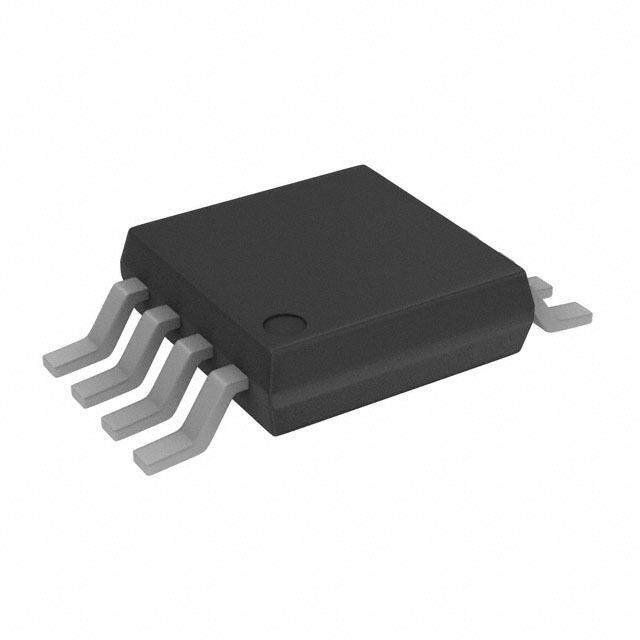
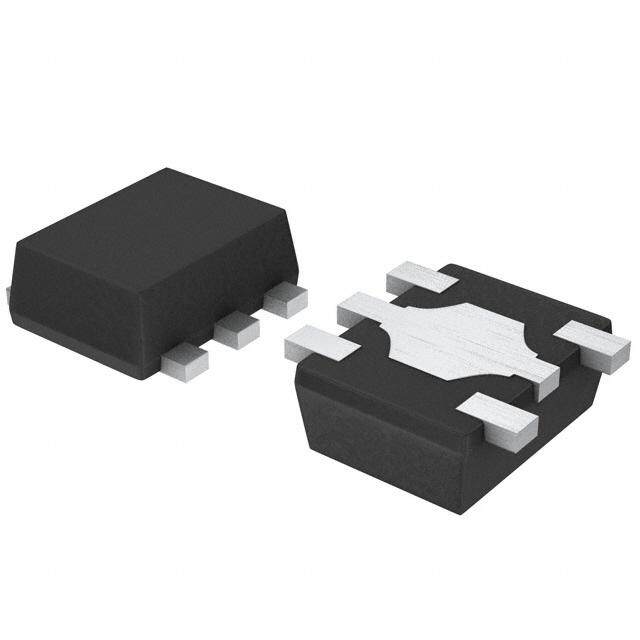
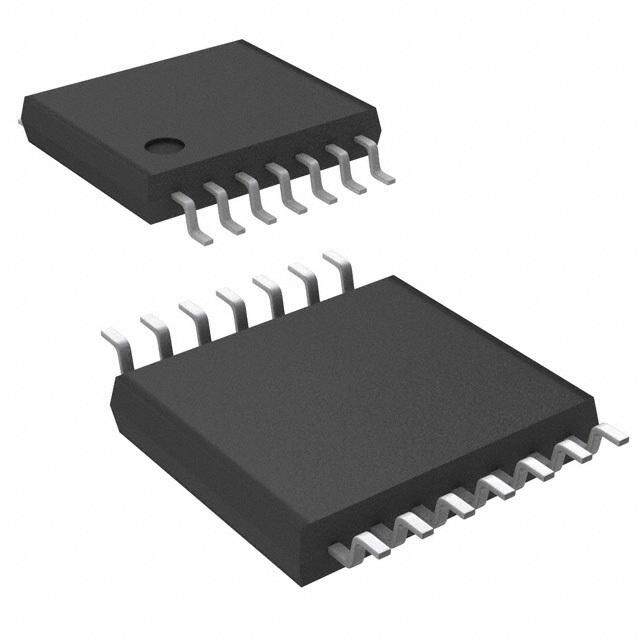

- 商务部:美国ITC正式对集成电路等产品启动337调查
- 曝三星4nm工艺存在良率问题 高通将骁龙8 Gen1或转产台积电
- 太阳诱电将投资9.5亿元在常州建新厂生产MLCC 预计2023年完工
- 英特尔发布欧洲新工厂建设计划 深化IDM 2.0 战略
- 台积电先进制程称霸业界 有大客户加持明年业绩稳了
- 达到5530亿美元!SIA预计今年全球半导体销售额将创下新高
- 英特尔拟将自动驾驶子公司Mobileye上市 估值或超500亿美元
- 三星加码芯片和SET,合并消费电子和移动部门,撤换高东真等 CEO
- 三星电子宣布重大人事变动 还合并消费电子和移动部门
- 海关总署:前11个月进口集成电路产品价值2.52万亿元 增长14.8%
PDF Datasheet 数据手册内容提取
TLC2654, TLC2654A Advanced LinCMOS LOW-NOISE CHOPPER-STABILIZED OPERATIONAL AMPLIFIERS SLOS020G – NOVEMBER 1988 – REVISED APRIL 2001 (cid:0) Input Noise Voltage D, JG, OR P PACKAGE 0.5 µV (Peak-to-Peak) Typ, f = 0 to 1 Hz (TOP VIEW) 1.5 µV (Peak-to-Peak) Typ, f = 0 to 10 Hz 47 nV/√Hz Typ, f = 10 Hz CXA 1 8 CXB 13 nV/√Hz Typ, f = 1 kHz IN– 2 7 VDD+ (cid:0) IN+ 3 6 OUT High Chopping Frequency...10 kHz Typ (cid:0) VDD– 4 5 CLAMP No Clock Noise Below 10 kHz (cid:0) No Intermodulation Error Below 5 kHz D, J, OR N PACKAGE (cid:0) (TOP VIEW) Low Input Offset Voltage 10 µV Max (TLC2654A) (cid:0) CXB 1 14 INT/EXT Excellent Offset Voltage Stability With Temperature...0.05 µV/°C Max CXA 2 13 CLK IN (cid:0) NC 3 12 CLK OUT A ...135 dB Min (TLC2654A) (cid:0) VD IN– 4 11 VDD+ CMRR...110 dB Min (TLC2654A) IN+ 5 10 OUT (cid:0) k ...110 dB Min NC 6 9 CLAMP SVR (cid:0) Single-Supply Operation VDD– 7 8 C RETURN (cid:0) Common-Mode Input Voltage Range FK PACKAGE Includes the Negative Rail (TOP VIEW) (cid:0) No Noise Degradation With External T X N (cid:0) CAvaapialacbitloer sin C Qo-nTnemecpte Adu ttoo mVDoDtiv–e CXACXBNCNT/E CLK I I HighRel Automotive Applications Configuration Control/Print Support 3 2 1 20 19 NC 4 18 CLK OUT Qualification to Automotive Standards NC 5 17 NC IN– 6 16 VDD+ description NC 7 15 NC The TLC2654 and TLC2654A are low-noise IN+ 8 14 OUT 9 10 11 12 13 chopper-stabilized operational amplifiers using tthheis Apdrovcaenscse dw iLthin CchMoOpSper -sptraobcielizsast.i oCno mcirbcinuiintrgy NC V DD –NCTURN LAMP makes excellent dc precision possible. In addition, E C R circuit techniques are added that give the C TLC2654 and TLC2654A superior noise perfor- NC – No internal connection mance. Chopper-stabilization techniques provide for extremely high dc precision by continuously nulling input offset voltage even during variations in temperature, time, common-mode voltage, and power-supply voltage. The high chopping frequency of the TLC2654 and TLC2654A (see Figure 1) provides excellent noise performance in a frequency spectrum from near dc to 10 kHz. In addition, intermodulation or aliasing error is eliminated from frequencies up to 5 kHz. This high dc precision and low noise, coupled with the extremely high input impedance of the CMOS input stage, makes the TLC2654 and TLC2654A ideal choices for a broad range of applications such as low-level, low-frequency thermocouple amplifiers and strain gauges and wide-bandwidth and subsonic circuits. For applications requiring even greater dc precision, use the TLC2652 or TLC2652A devices, which have a chopping frequency of 450 Hz. Please be aware that an important notice concerning availability, standard warranty, and use in critical applications of TexasInstruments semiconductor products and disclaimers thereto appears at the end of this data sheet. Advanced LinCMOS is a trademark of Texas Instruments. PRODUCTION DATA information is current as of publication date. Copyright 2001, Texas Instruments Incorporated Products conform to specifications per the terms of Texas Instruments On products compliant to MIL-PRF-38535, all parameters are tested standard warranty. Production processing does not necessarily include unless otherwise noted. On all other products, production testing of all parameters. processing does not necessarily include testing of all parameters. POST OFFICE BOX 655303 • DALLAS, TEXAS 75265 1
TLC2654, TLC2654A Advanced LinCMOS LOW-NOISE CHOPPER-STABILIZED OPERATIONAL AMPLIFIERS SLOS020G – NOVEMBER 1988 – REVISED APRIL 2001 description (continued) EQUIVALENT INPUT NOISE VOLTAGE vs The TLC2654 and TLC2654A common-mode FREQUENCY input voltage range includes the negative rail, 10 k thereby providing superior performance in either VZHz X single-supply or split-supply applications, even at X power supply voltage levels as low as ±2.3 V. nV/nV/ – Two external capacitors are required to operate ge a 1 k the device; however, the on-chip chopper-control olt V circuitry is transparent to the user. On devices in e Typical 250-Hz s the 14-pin and 20-pin packages, the control oi Chopper-Stabilized circuitry is accessible, allowing the user the option ut N Operational Amplifier of controlling the clock frequency with an external p n frequency source. In addition, the clock threshold nt I 100 of the TLC2554 and TLC2654A requires no level ale TLC2654 v shifting when used in the single-supply configura- ui q tion with a normal CMOS or TTL clock input. E – n n Innovative circuit techniques used on the VV 10 TLC2654 and TLC2654A allow exceptionally fast 1 10 100 1 k overload recovery time. An output clamp pin is f – Frequency – Hz available to reduce the recovery time even further. Figure 1 The device inputs and outputs are designed to withstand –100-mA surge currents without sustaining latch-up. In addition, the TLC2654 and TLC2654A incorporate internal ESD-protection circuits that prevent functional failures at voltages up to 2000 V as tested under MIL-STD-883C, Method 3015; however, exercise care in handling these devices, as exposure to ESD may result in degradation of the device parametric performance. The C-suffix devices are characterized for operation from 0°C to 70°C. The I-suffix devices are characterized for operation from –40°C to 85°C. The Q-suffix devices are characterized for operation from –40°C to 125°C. The M-suffix devices are characterized for operation over the full military temperature range of –55°C to125°C. AVAILABLE OPTIONS PACKAGED DEVICES VVIIOOmmaaxx 8 PIN 14 PIN 20 PIN TTA AT 25°C SMALL CERAMIC PLASTIC SMALL CERAMIC PLASTIC CERAMIC OUTLINE DIP DIP OUTLINE DIP DIP DIP (D) (JG) (P) (D) (J) (N) (FK) 1100 µµVV TTLLCC22665544AACC--88DD —— TTLLCC22665544AACCPP TTLLCC22665544AACC--1144DD —— TTLLCC22665544AACCNN —— 0°C to 70°C 2200 mmVV TTLLCC22665544CC-88DD — TTLLCC22665544CCPP TTLLCC22665544CC-1144DD — TTLLCC22665544CCNN — 1100 µµVV TTLLCC22665544AAII--88DD —— TTLLCC22665544AAIIPP TTLLCC22665544AAII--1144DD —— TTLLCC22665544AAIINN —— –40°C to 85°C 2200 µµVV TTLLCC22665544II-88DD — TTLLCC22665544IIPP TTLLCC22665544II-1144DD — TTLLCC22665544IINN — 1100 µµVV TTLLCC22665544AAQQ--88DD —— —— —— —— —— —— –40°C to 125°C 2200 µµVV TTLLCC22665544QQ-88DD — — — — — — 1100 µµVV TTLLCC22665544AAMM--88DD TTLLCC22665544AAMMJJGG TTLLCC22665544AAMMPP TTLLCC22665544AAMM--1144DD TTLLCC22665544AAMMJJ TTLLCC22665544AAMMNN TTLLCC22665544AAMMFFKK –55°C to 125°C 2200 µµVV TTLLCC22665544MM-88DD TTLLCC22665544MMJJGG TTLLCC22665544MMPP TTLLCC22665544MM-1144DD TTLLCC22665544MMJJ TTLLCC22665544MMNN TTLLCC22665544MMFFKK The 8-pin and 14-pin D packages are available taped and reeled. Add R suffix to device type (e.g., TLC2654AC-8DR). 2 POST OFFICE BOX 655303 • DALLAS, TEXAS 75265
TLC2654, TLC2654A Advanced LinCMOS LOW-NOISE CHOPPER-STABILIZED OPERATIONAL AMPLIFIERS SLOS020G – NOVEMBER 1988 – REVISED APRIL 2001 functional block diagram VDD+ 11 Clamp 9 CLAMP Circuit 5 IN+ + 10 IN– – OUT 4 CIC B Main A B A + – Compensation- A B Biasing Null 1 2 Circuit CXB CXA External Components 7 8 C RETURN VDD– Pin numbers shown are for the D (14 pin), J, and N packages. POST OFFICE BOX 655303 • DALLAS, TEXAS 75265 3
TLC2654, TLC2654A Advanced LinCMOS LOW-NOISE CHOPPER-STABILIZED OPERATIONAL AMPLIFIERS SLOS020G – NOVEMBER 1988 – REVISED APRIL 2001 absolute maximum ratings over operating free-air temperature range (unless otherwise noted)† Supply voltage, V (see Note 1) . . . . . . . . . . . . . . . . . . . . . . . . . . . . . . . . . . . . . . . . . . . . . . . . . . . . . . . . . . . . 8 V DD+ Supply voltage, V (see Note 1) . . . . . . . . . . . . . . . . . . . . . . . . . . . . . . . . . . . . . . . . . . . . . . . . . . . . . . . . . . . –8 V DD– Differential input voltage, V (see Note 2) . . . . . . . . . . . . . . . . . . . . . . . . . . . . . . . . . . . . . . . . . . . . . . . . . . . ±16 V ID Input voltage, V (any input, see Note 1) . . . . . . . . . . . . . . . . . . . . . . . . . . . . . . . . . . . . . . . . . . . . . . . . . . . . . . ±8 V I Voltage range on CLK IN and INT/EXT . . . . . . . . . . . . . . . . . . . . . . . . . . . . . . . . . . . . . . . V to V + 5.2 V DD– DD– Input current, II (each input) . . . . . . . . . . . . . . . . . . . . . . . . . . . . . . . . . . . . . . . . . . . . . . . . . . . . . . . . . . . . . . . ±5 mA Output current, I . . . . . . . . . . . . . . . . . . . . . . . . . . . . . . . . . . . . . . . . . . . . . . . . . . . . . . . . . . . . . . . . . . . . . . . ±50 mA O Duration of short-circuit current at (or below) 25°C (see Note 3) . . . . . . . . . . . . . . . . . . . . . . . . . . . . . . unlimited Current into CLK IN and INT/EXT . . . . . . . . . . . . . . . . . . . . . . . . . . . . . . . . . . . . . . . . . . . . . . . . . . . . . . . . . . ±5 mA Continuous total dissipation . . . . . . . . . . . . . . . . . . . . . . . . . . . . . . . . . . . . . . . . . . . See Dissipation Rating Table Operating free-air temperature range, T : C suffix . . . . . . . . . . . . . . . . . . . . . . . . . . . . . . . . . . . . . . 0°C to 70°C A I suffix . . . . . . . . . . . . . . . . . . . . . . . . . . . . . . . . . . . . . –40°C to 85°C Q suffix . . . . . . . . . . . . . . . . . . . . . . . . . . . . . . . . . . . –40°C to 125°C M suffix . . . . . . . . . . . . . . . . . . . . . . . . . . . . . . . . . . . –55°C to 125°C Storage temperature range . . . . . . . . . . . . . . . . . . . . . . . . . . . . . . . . . . . . . . . . . . . . . . . . . . . . . . . . –65°C to 150°C Case temperature for 60 seconds: FK package . . . . . . . . . . . . . . . . . . . . . . . . . . . . . . . . . . . . . . . . . . . . . . 260°C Lead temperature 1,6 mm (1/16 inch) from case for 10 seconds: D, N, or P package . . . . . . . . . . . . . 260°C Lead temperature 1,6 mm (1/16 inch) from case for 60 seconds: J or JG package . . . . . . . . . . . . . . . . 300°C †Stresses beyond those listed under “absolute maximum ratings” may cause permanent damage to the device. These are stress ratings only, and functional operation of the device at these or any other conditions beyond those indicated under “recommended operating conditions” is not implied. Exposure to absolute-maximum-rated conditions for extended periods may affect device reliability. NOTES: 1. All voltage values, except differential voltages, are with respect to the midpoint between VDD+ and VDD–. 2. Differential voltages are at IN+ with respect to IN–. 3. The output may be shorted to either supply. Temperature and/or supply voltages must be limited to ensure that the maximum dissipation rating is not exceeded. DISSIPATION RATING TABLE PPAACCKKAAGGEE TAA ≤ 25°C DERATING FACTOR TAA = 70°C TAA = 85°C TAA = 125°C POWER RATING ABOVE TA = 25°C POWER RATING POWER RATING POWER RATING DD ((88 piinn)) 772255 mmWW 55..88 mmWW//°CC 446644 mmWW 337777 mmWW 114455 mmWW D ((14 pin)) 950 mW 7.6 mW/°C 608 mW 494 mW 190 mW FK 1375 mW 11.0 mW/°C 880 mW 715 mW 275 mW J 1375 mW 11.0 mW/°C 880 mW 715 mW 275 mW JG 1050 mW 8.4 mW/°C 672 mW 546 mW 210 mW N 1150 mW 9.2 mW/°C 736 mW 598 mW 230 mW P 1000 mW 8.0 mW/°C 640 mW 520 mW 200 mW recommended operating conditions C SUFFIX I SUFFIX Q SUFFIX M SUFFIX UUNNIITT MIN MAX MIN MAX MIN MAX MIN MAX Supply voltage, VDD± ±2.3 ±8 ±2.3 ±8 ±2.3 ±8 ±2.3 ±8 V Common-mode input voltage, VIC VDD– VDD+ –2.3 VDD– VDD+ –2.3 VDD– VDD+ –2.3 VDD– VDD+ –2.3 V Clock input voltage VDD– VDD– +5 VDD– VDD– +5 VDD– VDD– +5 VDD– VDD– +5 V Operating free-air temperature, TA 0 70 –40 85 –40 125 –55 125 °C 4 POST OFFICE BOX 655303 • DALLAS, TEXAS 75265
TLC2654, TLC2654A Advanced LinCMOS LOW-NOISE CHOPPER-STABILIZED OPERATIONAL AMPLIFIERS SLOS020G – NOVEMBER 1988 – REVISED APRIL 2001 electrical characteristics at specified free-air temperature, VDD±= ±5 V (unless otherwise noted) TLC2654C TLC2654AC PPAARRAAMMEETTEERR TTEESSTT CCOONNDDIITTIIOONNSS TTAA†† UUNNIITT MIN TYP MAX MIN TYP MAX Input offset voltagge 25°C 5 20 4 10 VVIIOO µµVV (see Note 4) Full range 34 24 Temperature coefficient of ααVVIIOO FFuullll rraannggee 00.0011 00.0055 00.0011 00.0055 µµVV//°°CC input offset voltage Input offset voltage long-term drift (see Note 5) VIC = 0, RS = 50 Ω 25°C 0.003 0.06 0.003 0.02 µV/mo 25°C 30 60 30 60 IIIIOO IInnppuutt ooffffsseett ccuurrrreenntt ppAA Full range 150 150 25°C 50 60 50 60 IIIIBB IInnppuutt bbiiaass ccuurrrreenntt ppAA Full range 150 150 Common-mode input –5 –5 VVIICCRR RRSS == 5500 ΩΩ FFuullll rraannggee ttoo ttoo VV voltage range 2.7 2.7 Maximum positive peak 25°C 4.7 4.8 4.7 4.8 VVOOMM+ RRLL == 1100 kkΩΩ, SSeeee NNoottee 66 VV output voltage swing Full range 4.7 4.7 Maximum neggative peak 25°C –4.7 –4.9 –4.7 –4.9 VVOOMM– RRLL == 1100 kkΩΩ, SSeeee NNoottee 66 VV output voltage swing Full range –4.7 –4.7 Largge-siggnal differential 25°C 120 155 135 155 AAVVDD VVOO == ±±44 VV, RRLL == 1100 kkΩΩ ddBB voltage amplification Full range 120 130 Internal chopping 25°C 10 10 kHz frequency 25°C 25 25 CCllaammpp oonn-ssttaattee ccuurrrreenntt RRLL == 110000 kkΩΩ µµAA Full range 25 25 25°C 100 100 CCllaammpp ooffff-ssttaattee ccuurrrreenntt VVOO == –44 VV ttoo 44 VV ppAA Full range 100 100 Common-mode rejjection VO = 0, 25°C 105 125 110 125 CCMMRRRR ratio VVIICC = VVIICCRRmmiinn, ddBB RS = 50 Ω Full range 105 110 kkSSVVRR Srautipop (l∆yy VvoDlDta±gge/∆ rVeIjjOec)tion VVODDDD =±± 0 =, ±2.3 VR Sto = ± 580 V Ω,, Fu2ll 5ra°Cnge 111100 125 111100 125 ddBB 25°C 1.5 2.4 1.5 2.4 IIDDDD SSuuppppllyy ccuurrrreenntt VVOO == 00, NNoo llooaadd mmAA Full range 2.5 2.5 †Full range is 0°C to 70°C. NOTES: 4. This parameter is not production tested full range. Thermocouple effects preclude measurement of the actual VIO of these devices in high-speed automated testing. VIO is measured to a limit determined by the test equipment capability at the temperature extremes. The test ensures that the stabilization circuitry is performing properly. 5. Typical values are based on the input offset voltage shift observed through 168 hours of operating life test at TA = 150°C extrapolated to TA = 25° using the Arrhenius equation and assuming an activation energy of 0.96 eV. 6. Output clamp is not connected. POST OFFICE BOX 655303 • DALLAS, TEXAS 75265 5
TLC2654, TLC2654A Advanced LinCMOS LOW-NOISE CHOPPER-STABILIZED OPERATIONAL AMPLIFIERS SLOS020G – NOVEMBER 1988 – REVISED APRIL 2001 operating characteristics at specified free-air temperature, VDD± = ±5 V PPAARRAAMMEETTEERR CONTTDEEISSTTTIONS TTAA†† MINTLCT26Y5P4C MAX MINTLC2T6Y5P4ACMAX UUNNIITT 25°C 1.5 2 1.5 2 SSRR++ PPoossiittiivvee sslleeww rraattee aatt uunniittyy ggaaiinn VO = ±2.3 V, Full range 1.3 1.3 VV//µµss RRLL = 1100 kkΩΩ, 25°C 2.3 3.7 2.3 3.7 SSRR– NNeeggaattiivvee sslleeww rraattee aatt uunniittyy ggaaiinn CCLL == 110000 pFF VV//µµss Full range 1.7 1.7 Eqquivalent input noise voltagge f = 10 Hz 47 47 75 VVn 2255°°CC nnVV//√√HHzz (see Note 7) f = 1 kHz 13 13 20 Peak-to-peak eqquivalent input f = 0 to 1 Hz 0.5 0.5 VVNN((PPPP)) 2255°°CC µµVV noise voltage f = 0 to 10 Hz 1.5 1.5 In Equivalent input noise current f = 10 kHz 25°C 0.004 0.004 pA/√Hz f = 10 kHz,, Gain-bandwidth product RLL = 10 kΩ, 25°C 1.9 1.9 MHz CL = 100 pF φm Phase margin at unity gain RCLL == 11000 k ΩpF, 25°C 48° 48° †Full range is 0°C to 70°C. NOTE 7: This parameter is tested on a sample basis for the TLC2654A. For other test requirements, please contact the factory. This statement has no bearing on testing or nontesting of other parameters. 6 POST OFFICE BOX 655303 • DALLAS, TEXAS 75265
TLC2654, TLC2654A Advanced LinCMOS LOW-NOISE CHOPPER-STABILIZED OPERATIONAL AMPLIFIERS SLOS020G – NOVEMBER 1988 – REVISED APRIL 2001 electrical characteristics at specified free-air temperature, VDD± = ±5 V (unless otherwise noted) TLC2654I TLC2654AI PPAARRAAMMEETTEERR TTEESSTT CCOONNDDIITTIIOONNSS TTAA†† UUNNIITT MIN TYP MAX MIN TYP MAX Input offset voltagge 25°C 5 20 4 10 VVIIOO µµVV (see Note 4) Full range 40 30 Temperature coefficient of ααVVIIOO FFuullll rraannggee 00.0011 00.0055 00.0011 00.0055 µµVV//°°CC input offset voltage Input offset voltage long-term drift (see Note 5) VIC = 0, RS = 50 Ω 25°C 0.003 0.06 0.003 0.02 µV/mo 25°C 30 60 30 60 IIIIOO IInnppuutt ooffffsseett ccuurrrreenntt ppAA Full range 200 200 25°C 50 60 50 60 IIIIBB IInnppuutt bbiiaass ccuurrrreenntt ppAA Full range 200 200 –5 –5 Common-mode input VVIICCRR RRSS == 5500 ΩΩ FFuullll rraannggee ttoo ttoo VV voltage range 2.7 2.7 Maximum positive peak 25°C 4.7 4.8 4.7 4.8 VVOOMM+ RRLL == 1100 kkΩΩ, SSeeee NNoottee 66 VV output voltage swing Full range 4.7 4.7 Maximum neggative peak 25°C –4.7 –4.9 –4.7 –4.9 VVOOMM– RRLL == 1100 kkΩΩ, SSeeee NNoottee 66 VV output voltage swing Full range –4.7 –4.7 Largge-siggnal differential 25°C 120 155 135 155 AAVVDD VVOO == ±±44 VV, RRLL == 1100 kkΩΩ ddBB voltage amplification Full range 120 125 Internal chopping 25°C 10 10 kHz frequency 25°C 25 25 CCllaammpp oonn-ssttaattee ccuurrrreenntt RRLL == 110000 kkΩΩ µµAA Full range 25 25 25°C 100 100 CCllaammpp ooffff-ssttaattee ccuurrrreenntt VVOO == –44 VV ttoo 44 VV ppAA Full range 100 100 Common-mode rejjection VO = 0, 25°C 105 125 110 125 CCMMRRRR ratio VVIICC = VVIICCRRmmiinn, ddBB RS = 50 Ω Full range 105 110 kkSSVVRR Srautipop (l∆yy VvoDlDta±gge/∆ rVeIjjOec)tion VVODDDD =±± 0 =, ±2.3 RV Sto = ± 580 V Ω,, Fu2ll 5ra°Cnge 111100 125 111100 125 ddBB 25°C 1.5 2.4 1.5 2.4 IIDDDD SSuuppppllyy ccuurrrreenntt VVOO == 00, NNoo llooaadd mmAA Full range 2.5 2.5 †Full range is –40°C to 85°C NOTES: 4. This parameter is not production tested full range. Thermocouple effects preclude measurement of the actual VIO of these devices in high-speed automated testing. VIO is measured to a limit determined by the test equipment capability at the temperature extremes. The test ensures that the stabilization circuitry is performing properly. 5. Typical values are based on the input offset voltage shift observed through 168 hours of operating life test at TA = 150°C extrapolated to TA = 25°C using the Arrhenius equation and assuming an activation energy of 0.96 eV. 6. Output clamp is not connected. POST OFFICE BOX 655303 • DALLAS, TEXAS 75265 7
TLC2654, TLC2654A Advanced LinCMOS LOW-NOISE CHOPPER-STABILIZED OPERATIONAL AMPLIFIERS SLOS020G – NOVEMBER 1988 – REVISED APRIL 2001 operating characteristics at specified free-air temperature, VDD± = ±5 V TEST TLC2654I TLC2654AI PPAARRAAMMEETTEERR CONDITIONS TTAA†† MIN TYP MAX MIN TYP MAX UUNNIITT 25°C 1.5 2 1.5 2 SSRR++ PPoossiittiivvee sslleeww rraattee aatt uunniittyy ggaaiinn VO = ±2.3 V, Full range 1.2 1.2 VV//µµss RRLL = 1100 kkΩΩ, 25°C 2.3 3.7 2.3 3.7 SSRR– NNeeggaattiivvee sslleeww rraattee aatt uunniittyy ggaaiinn CCLL == 110000 pFF VV//µµss Full range 1.5 1.5 Eqquivalent input noise voltagge f = 10 Hz 47 47 75 VVn 2255°°CC nnVV//√√HHzz (see Note 7) f = 1 kHz 13 13 20 Peak-to-peak eqquivalent input f = 0 to 1 Hz 0.5 0.5 VVNN((PPPP)) 2255°°CC µµVV noise voltage f = 0 to 10 Hz 1.5 1.5 In Equivalent input noise current f = 10 kHz 25°C 0.004 0.004 pA/√Hz ff = 1100 kkHHzz,, Gain-bandwidth product RLL = 10 kΩ, 25°C 1.9 1.9 MHz CL = 100 pF φm Phase margin at unity gain RCLL == 11000 k ΩpF, 25°C 48° 48° †Full range is –40°C to 85°C. NOTE 7: This parameter is tested on a sample basis for the TLC2654A. For other test requirements, please contact the factory. This statement has no bearing on testing or nontesting of other parameters. 8 POST OFFICE BOX 655303 • DALLAS, TEXAS 75265
TLC2654, TLC2654A Advanced LinCMOS LOW-NOISE CHOPPER-STABILIZED OPERATIONAL AMPLIFIERS SLOS020G – NOVEMBER 1988 – REVISED APRIL 2001 electrical characteristics at specified free-air temperature, VDD± = ±5 V (unless otherwise noted) TLC2654Q TLC2654AQ PARAMETER TEST CONDITIONS TTAA† TLC2654M TLC2654AM UNIT MIN TYP MAX MIN TYP MAX Input offset voltagge 25°C 5 20 4 10 VVIIOO µµVV (see Note 4) Full range 50 40 ααVVIIOO Temperature coefficient of FFuullll rraannggee 00.0011 00.0055∗∗ 00.0011 00.0055∗∗ µµVV//°°CC input offset voltage Ilonnpgu-tt oefrfmse dt rvifot l(tasegee Note 5) VIC = 0, RS = 50 Ω 25°C 0.003 0.06∗ 0.003 0.02∗ µV/mo 25°C 30 60 30 60 IIIIOO IInnppuutt ooffffsseett ccuurrrreenntt ppAA Full range 500 500 25°C 50 60 50 60 IIIIBB IInnppuutt bbiiaass ccuurrrreenntt ppAA Full range 500 500 –55 –55 CCoommmmoonn-mmooddee iinnppuutt VIICCRR RSS = 50 Ω Full rangge to to V vvoollttaaggee rraannggee 2.7 2.7 Maximum positive peak 25°C 4.7 4.8 4.7 4.8 VVOOMM+ RRLL == 1100 kkΩΩ, SSeeee NNoottee 66 VV output voltage swing Full range 4.7 4.7 Maximum neggative peak 25°C –4.7 –4.9 –4.7 –4.9 VVOOMM– RRLL == 1100 kkΩΩ, SSeeee NNoottee 66 VV output voltage swing Full range –4.7 –4.7 Largge-siggnal differential 25°C 120 155 135 155 AAVVDD VVOO == ±±44 VV, RRLL == 1100 kkΩΩ ddBB voltage amplification Full range 120 120 Internal chopping 25°C 10 10 kHz frequency 25°C 25 25 CCllaammpp oonn-ssttaattee ccuurrrreenntt RRLL == 110000 kkΩΩ µµAA Full range 25 25 25°C 100 100 CCllaammpp ooffff-ssttaattee ccuurrrreenntt VVOO == –44 VV ttoo 44 VV ppAA Full range 500 500 Common-mode rejjection VO = 0, 25°C 105 125 110 125 CCMMRRRR ratio VVIICC = VVIICCRRmmiinn, ddBB RS = 50 Ω Full range 105 110 kkSSVVRR Srautipop (l∆yy VvoDlDta±gge/∆ rVeIjjOec)tion VVDDODD =±± 0 =, ±2.3 VR Sto =± 580 V Ω,, Fu2ll 5ra°Cnge 111005 125 111100 125 ddBB 25°C 1.5 2.4 1.5 2.4 IIDDDD SSuuppppllyy ccuurrrreenntt VVOO == 00, NNoo llooaadd mmAA Full range 2.5 2.5 ∗ On products complaint to MIL-STD-883, Class B, this parameter is not production tested. †Full range is –40° to 125°C for Q suffix, –55° to 125°C for M suffix. NOTES: 4. This parameter is not production tested full range. Thermocouple effects preclude measurement of the actual VIO of these devices in high-speed automated testing. VIO is measured to a limit determined by the test equipment capability at the temperature extremes. The test ensures that the stabilization circuitry is performing properly. 5. Typical values are based on the input offset voltage shift observed through 168 hours of operating life test at TA = 150°C extrapolated to TA = 25°C using the Arrhenius equation and assuming an activation energy of 0.96 eV. 6. Output clamp is not connected. POST OFFICE BOX 655303 • DALLAS, TEXAS 75265 9
TLC2654, TLC2654A Advanced LinCMOS LOW-NOISE CHOPPER-STABILIZED OPERATIONAL AMPLIFIERS SLOS020G – NOVEMBER 1988 – REVISED APRIL 2001 operating characteristics at specified free-air temperature, VDD± = ±5 V TLC2654Q TLC2654M PARAMETER TEST CONDITIONS TA† TLC2654AQ UNIT TLC2654AM MIN TYP MAX 25°C 1.5 2 SSRR++ PPoossiittiivvee sslleeww rraattee aatt uunniittyy ggaaiinn VV//µµss Full range 1.1 VVOO == ±±22.33 VV, RRLL == 1100 kkΩΩ, CCLL == 110000 ppFF 25°C 2.3 3.7 SSRR– NNeeggaattiivvee sslleeww rraattee aatt uunniittyy ggaaiinn VV//µµss Full range 1.3 f = 10 Hz 25°C 47 VVn EEqquuiivvaalleenntt iinnppuutt nnooiissee vvoollttaaggee nnVV//√√HHzz f = 1 kHz 25°C 13 Peak-to-peak eqquivalent input f = 0 to 1 Hz 25°C 0.5 VVNN((PPPP)) µµVV noise voltage f = 0 to 10 Hz 25°C 1.5 In Equivalent input noise current f = 1 kHz 25°C 0.004 pA/√Hz Gain-bandwidth product f = 10 kHz, RL = 10 kΩ, CL = 100 pF 25°C 1.9 MHz φm Phase margin at unity gain RL = 10 kΩ, CL = 100 pF 25°C 48° †Full range is –40° to 125°C for Q suffix, –55° to 125°C for M suffix. 10 POST OFFICE BOX 655303 • DALLAS, TEXAS 75265
TLC2654, TLC2654A Advanced LinCMOS LOW-NOISE CHOPPER-STABILIZED OPERATIONAL AMPLIFIERS SLOS020G – NOVEMBER 1988 – REVISED APRIL 2001 TYPICAL CHARACTERISTICS Table of Graphs FIGURE VIO Input offset voltage Distribution 2 Normalized input offset voltage vs Chopping frequency 3 vs Choppingg freqquencyy 4 IIIIOO IInnppuutt ooffffsseett ccuurrrreenntt vs Free-air temperature 5 vvss CCoommmmoonn-mmooddee iinnpuutt vvoollttaaggee 66 IIIBB Input bias current vs Choppingg freqquencyy 7 vs Free-air temperature 8 Clamp current vs Output voltage 9 vs Output current 10 VVOOMM MMaaxxiimmuumm ppeeaakk oouuttppuutt vvoollttaaggee sswwiinngg vs Free-air temperature 11 VO(PP) Maximum peak-to-peak output voltage swing vs Frequency 12 CMRR Common-mode rejection ratio vs Frequency 13 vs Freqquencyy 14 AAVVDD LLaarrggee-ssiiggnnaall ddiiffffeerreennttiiaall vvoollttaaggee aammpplliiffiiccaattiioonn vs Free-air temperature 15 vs Supplyy voltagge 16 CChhooppppiinngg ffrreeqquueennccyy vs Free-air temperature 17 vs Supplyy voltagge 18 IIDDDD SSuuppppllyy ccuurrrreenntt vs Free-air temperature 19 vs Supplyy voltagge 20 IIOOSS SShhoorrtt-cciirrccuuiitt oouuttppuutt ccuurrrreenntt vs Free-air temperature 21 vs Supplyy voltagge 22 SSRR SSlleeww rraattee vs Free-air temperature 23 Small siggnal 24 VVoollttaaggee-ffoolllloowweerr ppuullssee rreessppoonnssee Large signal 25 VN(PP) Peak-to-peak input noise voltage vs Chopping frequency 26, 27 Vn Equivalent input noise voltage vs Frequency 28 kSVR Supply voltage rejection ratio vs Frequency 29 vs Supplyy voltagge 30 GGaaiinn-bbaannddwwiiddtthh pprroodduucctt vs Free-air temperature 31 vs Supplyy voltagge 32 φφm PPhhaassee mmaarrggiinn vs Load capacitance 33 Phase shift vs Frequency 14 POST OFFICE BOX 655303 • DALLAS, TEXAS 75265 11
TLC2654, TLC2654A Advanced LinCMOS LOW-NOISE CHOPPER-STABILIZED OPERATIONAL AMPLIFIERS SLOS020G – NOVEMBER 1988 – REVISED APRIL 2001 TYPICAL CHARACTERISTICS† NORMALIZED INPUT OFFSET VOLTAGE DISTRIBUTION OF TLC2654 vs INPUT OFFSET VOLTAGE CHOPPING FREQUENCY 20 40 456 Units Tested From 4 Wafer Lots VDD± = ±5 V VDD± = ±5 V µVuV VIC = 0 16 TNA P =a c2k5a°gCe ge – 30 TA = 25°C a % olt Units – 12 Offset V 20 of ut ntage 8 ed Inp 10 e z rc ali e m P r o 4 N 0 – O O VIVI 0 –10 100 1K 10K 100K –20 –16 –12 – 8 – 4 0 4 8 12 16 20 VIO – Input Offset Voltage – µV Chopping Frequency – Hz Figure 2 Figure 3 INPUT OFFSET CURRENT INPUT OFFSET CURRENT vs vs CHOPPING FREQUENCY FREE-AIR TEMPERATURE 140 100 VDD± = ±5 V VDD± = ±5 V VIC = 0 VIC = 0 120 TA = 25°C 80 A A Current – p 18000 Current – p 60 Offset 60 Offset O – Input O 40 O – Input O 40 IIII IIII 20 20 0 0 100 1 k 10 k 100 k 25 45 65 85 105 125 Chopping Frequency – Hz TA – Free-Air Temperature – °C Figure 4 Figure 5 †Data at high and low temperatures are applicable only within the rated operating free-air temperature ranges of the various devices. 12 POST OFFICE BOX 655303 • DALLAS, TEXAS 75265
TLC2654, TLC2654A Advanced LinCMOS LOW-NOISE CHOPPER-STABILIZED OPERATIONAL AMPLIFIERS SLOS020G – NOVEMBER 1988 – REVISED APRIL 2001 TYPICAL CHARACTERISTICS† INPUT BIAS CURRENT INPUT BIAS CURRENT vs vs COMMON-MODE INPUT VOLTAGE CHOPPING FREQUENCY 1000 100 VDD± = ±5 V VDD± = ±5 V TA = 25°C VIC = 0 TA = 25°C 80 A A p p – – nt nt urre urre 60 C C s 100 s a a Bi Bi ut ut 40 p p n n – I – I B B B B IIII IIII 20 10 0 – 5 – 4 – 3 – 2 –1 0 1 2 3 4 5 100 1 k 10 k 100 k VIC – Common-Mode Input Voltage – V Chopping Frequency – Hz Figure 6 Figure 7 INPUT BIAS CURRENT CLAMP CURRENT vs vs FREE-AIR TEMPERATURE OUTPUT VOLTAGE 100 µA 100 VDD± = ±5 V VDD± = ±5 V VIC = 0 10 µA TA = 25°C 80 A 1 µA p ent – nt| 100 nA Positive Clamp Current rr 60 e u r C ur s C 10 nA Bia mp put 40 Cla 1 nA n | – I B B 100 pA IIII 20 Negative Clamp Current 10 pA 0 1 pA 25 45 65 85 105 125 4 4.2 4.4 4.6 4.8 5 TA – Free-Air Temperature – °C |VO| – Output Voltage – V Figure 8 Figure 9 †Data at high and low temperatures are applicable only within the rated operating free-air temperature ranges of the various devices. POST OFFICE BOX 655303 • DALLAS, TEXAS 75265 13
TLC2654, TLC2654A Advanced LinCMOS LOW-NOISE CHOPPER-STABILIZED OPERATIONAL AMPLIFIERS SLOS020G – NOVEMBER 1988 – REVISED APRIL 2001 TYPICAL CHARACTERISTICS† MAXIMUM PEAK OUTPUT VOLTAGE MAXIMUM PEAK OUTPUT VOLTAGE vs vs OUTPUT CURRENT FREE-AIR TEMPERATURE 5 5 VDD± = ±5 V VOM+ – V TA = 25°C – V e e ag 4.8 ag olt olt 2.5 V V ut VOM+ VOM– ut p p ut 4.6 ut eak O eak O 0 VRDL D= ±1 0= k±Ω5 V P P m 4.4 m u u m m xi xi Ma Ma – 2.5 – 4.2 – M M O O V V VOM– 4 – 5 0 0.4 0.8 1.2 1.6 2 –75 – 50 – 25 0 25 50 75 100 125 |IO| – Output Current – mA TA – Free-Air Temperature – °C Figure 10 Figure 11 MAXIMUM PEAK-TO-PEAK OUTPUT VOLTAGE COMMOM-MODE REJECTION RATIO vs vs FREQUENCY FREQUENCY V 10 140 e – B VDD± = ±5 V oltag o – d 120 TA = 25°C ut V 8 Rati utp TA = –55°C on 100 Peak O 6 Rejecti 80 ak-to- TA = 125°C Mode 60 Pe 4 n- m mo mu m 40 o xi C – Ma 2 VDD± = ±5 V RR – 20 PP) PP) RL = 10 kΩ CM O(O( 0 0 VV 100 1 k 10 k 100 k 1 M 10 100 1 k 10 k f – Frequency – Hz f – Frequency – Hz Figure 12 Figure 13 †Data at high and low temperatures are applicable only within the rated operating free-air temperature ranges of the various devices. 14 POST OFFICE BOX 655303 • DALLAS, TEXAS 75265
TLC2654, TLC2654A Advanced LinCMOS LOW-NOISE CHOPPER-STABILIZED OPERATIONAL AMPLIFIERS SLOS020G – NOVEMBER 1988 – REVISED APRIL 2001 TYPICAL CHARACTERISTICS† LARGE-SIGNAL DIFFERENTIAL VOLTAGE LARGE-SIGNAL DIFFERENTIAL AMPLIFICATION AND PHASE SHIFT VOLTAGE AMPLIFICATION vs vs B FREQUENCY B FREE-AIR TEMPERATURE Amplification – d 11802000 Phase Shift 186000°0°° Amplification – d 115680 VVRODL D == ± 1± 0=4 k±VΩ5 V Voltage 60 AVD 120° hift Voltage 156 Differential 2400 116400°° Phase S Differential 154 D – Large-Signal D ––24000 TCVRADLL D=== ±211 500=°0 kC± pΩ5F V 221208000°°° D – Large-Signal D 115520 AVAV 10 100 1f k– Freq1u0e nkcy –1 0H0z k 1 M 10 M AVAV – 75 – 50 T–A 2 5– Fre0e-Air 2T5empe5r0ature7 –5 °C100 125 Figure 14 Figure 15 CHOPPING FREQUENCY CHOPPING FREQUENCY vs vs SUPPLY VOLTAGE FREE-AIR TEMPERATURE 11.4 10.5 TA = 25°C VDD± = ±5 V 11 Hz Hz 10 Chopping Frequency – k 1100..62 Chopping Frequency – k 9.95 9.8 8.5 9.4 0 1 2 3 4 5 6 7 8 –75 – 50 – 25 0 25 50 75 100 125 |VDD±| – Supply Voltage – V TA – Free-Air Temperature – °C Figure 16 Figure 17 †Data at high and low temperatures are applicable only within the rated operating free-air temperature ranges of the various devices. POST OFFICE BOX 655303 • DALLAS, TEXAS 75265 15
TLC2654, TLC2654A Advanced LinCMOS LOW-NOISE CHOPPER-STABILIZED OPERATIONAL AMPLIFIERS SLOS020G – NOVEMBER 1988 – REVISED APRIL 2001 TYPICAL CHARACTERISTICS† SUPPLY CURRENT SUPPLY CURRENT vs vs SUPPLY VOLTAGE FREE-AIR TEMPERATURE 2 2 VO = 0 No Load VDD± = ±7.5 V 1.6 1.6 VDD± = ±5 V A A m m Current – 1.2 TA = 25°C Current – 1.2 VDD± = ±2.5 V Supply 0.8 TA = –55°C Supply 0.8 D – D TA = 125°C D – D DD DD II 0.4 II 0.4 VO = 0 No Load 0 0 0 1 2 3 4 5 6 7 8 –75 – 50 – 25 0 25 50 75 100 125 |VDD ±| – Supply Voltage – V TA – Free-Air Temperature – °C Figure 18 Figure 19 SHORT-CIRCUIT OUTPUT CURRENT SHORT-CIRCUIT OUTPUT CURRENT vs vs SUPPLY VOLTAGE FREE-AIR TEMPERATURE 12 15 VO = 0 VDD± = ±5 V mA TA = 25°C mA VO = 0 – 8 – 10 nt nt e e urr 4 urr 5 ut C ut C VID = –100 mV utp VID = –100 mV utp O 0 O 0 uit uit c c ort-Cir – 4 ort-Cir – 5 h h VID = 100 mV S S S – S – 8 VID = 100 mV S – S –10 OO OO II II –12 –15 0 1 2 3 4 5 6 7 8 –75 – 50 – 25 0 25 50 75 100 125 |VDD ±| – Supply Voltage – V TA – Free-Air Temperature – °C Figure 20 Figure 21 †Data at high and low temperatures are applicable only within the rated operating free-air temperature ranges of the various devices. 16 POST OFFICE BOX 655303 • DALLAS, TEXAS 75265
TLC2654, TLC2654A Advanced LinCMOS LOW-NOISE CHOPPER-STABILIZED OPERATIONAL AMPLIFIERS SLOS020G – NOVEMBER 1988 – REVISED APRIL 2001 TYPICAL CHARACTERISTICS† SLEW RATE SLEW RATE vs vs SUPPLY VOLTAGE FREE-AIR TEMPERATURE 5 4 SR– SR– 4 3 s µV/usV/ µV/ussV/ Rate – 3 Rate – 2 SR+ w w Sle 2 Sle R – SR+ R – S S 1 1 RL = 10 kΩ VDD± = ±5 V CL = 100 pF RL = 10 kΩ TA = 25°C CL = 100 pF 0 0 0 1 2 3 4 5 6 7 8 –75 –50 –25 0 25 50 75 100 125 |VDD ±| – Supply Voltage – V TA – Free-Air Temperature – °C Figure 22 Figure 23 VOLTAGE-FOLLOWER VOLTAGE-FOLLOWER SMALL-SIGNAL LARGE-SIGNAL PULSE RESPONSE PULSE RESPONSE 100 4 75 3 V 50 2 m V – – ge 25 ge 1 ut Volta 0 VRCDLL D== ±11 00=0 k± pΩ5F V ut Volta 0 CVRDLL D== ±11 00=0 k± pΩ5F V Outp – 25 TA = 25°C Outp –1 TA = 25°C – – O O O O VV – 50 VV – 2 –75 – 3 –100 – 4 0 1 2 3 4 5 6 7 0 5 10 15 20 25 30 35 40 t – Time – µs t – Time – µs Figure 24 Figure 25 †Data at high and low temperatures are applicable only within the rated operating free-air temperature ranges of the various devices. POST OFFICE BOX 655303 • DALLAS, TEXAS 75265 17
TLC2654, TLC2654A Advanced LinCMOS LOW-NOISE CHOPPER-STABILIZED OPERATIONAL AMPLIFIERS SLOS020G – NOVEMBER 1988 – REVISED APRIL 2001 TYPICAL CHARACTERISTICS PEAK-TO-PEAK INPUT NOISE VOLTAGE PEAK-TO-PEAK INPUT NOISE VOLTAGE vs vs CHOPPING FREQUENCY CHOPPING FREQUENCY 1.8 5 µge – uVV 1.6 fVR =DS D 0= ± t2o =0 1 ±Ω H5z V µge – uVV VR f DS=D =0± 2t o=0 1±Ω05 HVz olta 1.4 TA = 25°C olta 4 TA = 25°C V V e e s 1.2 s oi oi N N 3 ut 1 ut p p n n ak I 0.8 ak I e e 2 P P k-to- 0.6 k-to- a a e e P 0.4 P 1 – – PP) PP) 0.2 PP) PP) VN(V N( 0 VN(V N( 0 0 2 4 6 8 10 0 2 4 6 8 10 Chopping Frequency – kHz Chopping Frequency – kHz Figure 26 Figure 27 EQUIVALENT INPUT NOISE VOLTAGE SUPPLY VOLTAGE REJECTION RATIO vs vs FREQUENCY FREQUENCY 50 140 xHz VDD± = ±5 V B VDD± = ±2.3 V to ±8 V – xxxxxnV/ 40 RTAS == 2250° CΩ atio – d 120 TA = 25°C e R g n a o 100 Volt ecti se 30 Rej 80 Noi ge put olta 60 kSVR+ n 20 V alent I upply 40 kSVR– v S VVN – Equin 10 kSVR – k SVR 20 0 0 1 10 100 1 k 10 k 10 100 1 k 10 k f – Frequency – Hz f – Frequency – Hz Figure 28 Figure 29 18 POST OFFICE BOX 655303 • DALLAS, TEXAS 75265
TLC2654, TLC2654A Advanced LinCMOS LOW-NOISE CHOPPER-STABILIZED OPERATIONAL AMPLIFIERS SLOS020G – NOVEMBER 1988 – REVISED APRIL 2001 TYPICAL CHARACTERISTICS† GAIN-BANDWIDTH PRODUCT GAIN-BANDWIDTH PRODUCT vs vs SUPPLY VOLTAGE FREE-AIR TEMPERATURE 2.1 2.6 RL = 10 kΩ VDD± = ±5 V CL = 100 pF RL = 10 kΩ 2.4 z TA = 25°C z CL = 100 pF H H M M – – 2.2 ct 2 ct u u d d Pro Pro 2 h h dt dt wi wi 1.8 d d an 1.9 an B B n- n- 1.6 ai ai G G 1.4 1.8 1.2 0 1 2 3 4 5 6 7 8 –75 – 50 – 25 0 25 50 75 100 125 |VDD±| – Supply Voltage – V TA – Free-Air Temperature – °C Figure 30 Figure 31 PHASE MARGIN PHASE MARGIN vs vs SUPPLY VOLTAGE LOAD CAPACITANCE 60° 60° RL = 10 kΩ VDD± = ±5 V 50° CL = 100 pF 50° RL = 10 kΩ TA = 25°C TA = 25°C Margin 40° Margin 40° Phase 30° Phase 30° – – m 20° m 20° φ φ 10° 10° 0° 0° 0 1 2 3 4 5 6 7 8 0 200 400 600 800 1000 |VDD±| – Supply Voltage – V CL – Load Capacitance – pF Figure 32 Figure 33 †Data at high and low temperatures are applicable only within the rated operating free-air temperature ranges of the various devices. POST OFFICE BOX 655303 • DALLAS, TEXAS 75265 19
TLC2654, TLC2654A Advanced LinCMOS LOW-NOISE CHOPPER-STABILIZED OPERATIONAL AMPLIFIERS SLOS020G – NOVEMBER 1988 – REVISED APRIL 2001 APPLICATION INFORMATION capacitor selection and placement Leakage and dielectric absorption are the two important factors to consider when selecting external capacitors C and C . Both factors can cause system degradation, negating the performance advantages realized by XA XB using the TLC2654. Degradation from capacitor leakage becomes more apparent with increasing temperatures. Low-leakage capacitors and standoffs are recommended for operation at T = 125°C. In addition, guard bands are A recommended around the capacitor connections on both sides of the printed-circuit board to alleviate problems caused by surface leakage on circuit boards. Capacitors with high dielectric absorption tend to take several seconds to settle upon application of power, which directly affects input offset voltage. In applications needing fast settling of input voltage, high-quality film capacitors such as mylar, polystyrene, or polypropylene should be used. In other applications, a ceramic or other low-grade capacitor can suffice. Unlike many choppers available today, the TLC2654 is designed to function with values of CXA and CXB in the range of 0.1 µF to 1 µF without degradation to input offset voltage or input noise voltage. These capacitors should be located as close as possible to C and C and return to either V or C RETURN. On many XA XB DD– choppers, connecting these capacitors to VDD– causes degradation in noise performance; this problem is eliminated on the TLC2654. internal/external clock The TLC2654 has an internal clock that sets the chopping frequency to a nominal value of 10 kHz. On 8-pin packages, the chopping frequency can only be controlled by the internal clock; however, on all 14-pin packages and the 20-pin FK package the device chopping frequency can be set by the internal clock or controlled externally by use of the INT/EXT and CLK IN. To use the internal 10-kHz clock, no connection is necessary. If external clocking is desired, connect INT/EXT to VDD– and the external clock to CLK IN. The external clock trip point is 2.5 V above the negative rail; however, CLK IN can be driven from the negative rail to 5 V above the negative rail. This allows the TLC2654 to be driven directly by 5-V TTL and CMOS logic when operating in the single-supply configuration. If this 5-V level is exceeded, damage could occur to the device unless the current into CLK IN is limited to ±5 mA. A divide-by-two V 0 ftrheeq cuheonpcpyi ndgiv ifdreeqr uinetnecrfya. cTehse w cihtho CppLiKng IN fr eaqnude snectsy ge – TVAD D= ±2 5=° ±C5 V a appears on CLK OUT. olt V ut overload recovery/output clamp p ut O When large differential-input-voltage conditions O – O – 5 are applied to the TLC2654, the nulling loop VV attempts to prevent the output from saturating by V m driving C and C to internally-clamped voltage 0 XA XB – levels. Once the overdrive condition is removed, e g a period of time is required to allow the built-up a charge to dissipate. This time period is defined as Volt overload recovery time (see Figure 34). Typical ut p overload recovery time for the TLC2654 is – In significantly faster than competitive products; VI VI – 50 however, this time can be reduced further by use 0 10 20 30 40 50 60 70 80 of internal clamp circuitry accessible through t – Time – ms CLAMP if required. Figure 34. Overload Recovery 20 POST OFFICE BOX 655303 • DALLAS, TEXAS 75265
TLC2654, TLC2654A Advanced LinCMOS LOW-NOISE CHOPPER-STABILIZED OPERATIONAL AMPLIFIERS SLOS020G – NOVEMBER 1988 – REVISED APRIL 2001 APPLICATION INFORMATION overload recovery/output clamp (continued) The clamp is a switch that is automatically activated when the output is approximately 1 V from either supply rail. When connected to the inverting input (in parallel with the closed-loop feedback resistor), the closed-loop gain is reduced and the TLC2654 output is prevented from going into saturation. Since the output must source or sink current through the switch (see Figure 9), the maximum output voltage swing is slightly reduced. thermoelectric effects To take advantage of the extremely low offset voltage temperature coefficient of the TLC2654, care must be taken to compensate for the thermoelectric effects present when two dissimilar metals are brought into contact with each other (such as device leads being soldered to a printed-circuit board). It is not uncommon for dissimilar metal junctions to produce thermoelectric voltages in the range of several microvolts per degree Celsius (orders of magnitude greater than the 0.01 µV/°C typical of the TLC2654). To help minimize thermoelectric effects, pay careful attention to component selection and circuit-board layout. Avoid the use of nonsoldered connections (such as sockets, relays, switches, etc.) in the input signal path. Cancel thermoelectric effects by duplicating the number of components and junctions in each device input. The use of low-thermoelectric-coefficient components, such as wire-wound resistors, is also beneficial. latch-up avoidance Because CMOS devices are susceptible to latch-up due to their inherent parasitic thyristors, the TLC2654 inputs and outputs are designed to withstand –100-mA surge currents without sustaining latch-up; however, techniques to reduce the chance of latch-up should be used whenever possible. Internal protection diodes should not, by design, be forward biased. Applied input and output voltages should not exceed the supply voltage by more than 300 mV. Care should be exercised when using capacitive coupling on pulse generators. Supply transients should be stunted by the use of decoupling capacitors (0.1 µF typical) located across the supply rails as close to the device as possible. The current path established if latch-up occurs is usually between the supply rails and is limited only by the impedance of the power supply and the forward resistance of the parasitic thyristor. The chance of latch-up occurring increases with increasing temperature and supply voltage. electrostatic-discharge protection The TLC2654 incorporates internal ESD-protection circuits that prevent functional failures at voltages at or below 2000 V. Care should be exercised in handling these devices, as exposure to ESD may result in degradation of the device parametric performance. theory of operation Chopper-stabilized operational amplifiers offer the best dc performance of any monolithic operational amplifier. This superior performance is the result of using two operational amplifiers — a main amplifier and a nulling amplifier – plus oscillator-controlled logic and two external capacitors to create a system that behaves as a single amplifier. With this approach, the TLC2654 achieves submicrovolt input offset voltage, submicrovolt noise voltage, and offset voltage variations with temperature in the nV/°C range. The TLC2654 on-chip control logic produces two dominant clock phases: a nulling phase and an amplifying phase. The term chopper-stabilized derives from the process of switching between these two clock phases. Figure 35 shows a simplified block diagram of the TLC2654. Switches A and B are make-before-break types. POST OFFICE BOX 655303 • DALLAS, TEXAS 75265 21
TLC2654, TLC2654A Advanced LinCMOS LOW-NOISE CHOPPER-STABILIZED OPERATIONAL AMPLIFIERS SLOS020G – NOVEMBER 1988 – REVISED APRIL 2001 APPLICATION INFORMATION theory of operation (continued) During the nulling phase, switch A is closed, shorting the nulling amplifier inputs together and allowing the nulling amplifier to reduce its own input offset voltage by feeding its output signal back to an inverting input node. Simultaneously, external capacitor CXA stores the nulling potential to allow the offset voltage of the amplifier to remain nulled during the amplifying phase. Main 5 IN+ + 10 4 OUT IN– – B CXB B A Null + 7 VDD– – A CXA Pin numbers shown are for the D (14 pin), J, and N packages. Figure 35. TLC2654 Simplified Block Diagram During the amplifying phase, switch B is closed, connecting the output of the nulling amplifier to a noninverting input of the main amplifier. In this configuration, the input offset voltage of the main amplifier is nulled. Also, external capacitor C stores the nulling potential to allow the offset voltage of the main amplifier to remain XB nulled during the next nulling phase. This continuous chopping process allows offset voltage nulling during variations in time and temperature and over the common-mode input voltage range and power supply range. In addition, because the low-frequency signal path is through both the null and main amplifiers, extremely high gain is achieved. The low-frequency noise of a chopper amplifier depends on the magnitude of the component noise prior to chopping and the capability of the circuit to reduce this noise while chopping. The use of the Advanced LinCMOS process, with its low-noise analog MOS transistors and patent-pending input stage design, significantly reduces the input noise voltage. The primary source of nonideal operation in chopper-stabilized amplifiers is error charge from the switches. As charge imbalance accumulates on critical nodes, input offset voltage can increase especially with increasing chopping frequency. This problem has been significantly reduced in the TLC2654 by use of a patent-pending compensation circuit and the Advanced LinCMOS process. The TLC2654 incorporates a feed-forward design that ensures continuous frequency response. Essentially, the gain magnitude of the nulling amplifier and compensation network crosses unity at the break frequency of the main amplifier. As a result, the high-frequency response of the system is the same as the frequency response of the main amplifier. This approach also ensures that the slewing characteristics remain the same during both the nulling and amplifying phases. The primary limitation on ac performance is the chopping frequency. As the input signal frequency approaches the chopper’s clock frequency, intermodulation (or aliasing) errors result from the mixing of these frequencies. To avoid these error signals, the input frequency must be less than half the clock frequency. Most choppers available today limit the internal chopping frequency to less than 500 Hz in order to eliminate errors due to the charge imbalancing phenomenon mentioned previously. However, to avoid intermodulation errors on a 500-Hz chopper, the input signal frequency must be limited to less than 250 Hz. 22 POST OFFICE BOX 655303 • DALLAS, TEXAS 75265
TLC2654, TLC2654A Advanced LinCMOS LOW-NOISE CHOPPER-STABILIZED OPERATIONAL AMPLIFIERS SLOS020G – NOVEMBER 1988 – REVISED APRIL 2001 APPLICATION INFORMATION theory of operation (continued) The TLC2654 removes this restriction on ac performance by using a 10-kHz internal clock frequency. This high chopping frequency allows amplification of input signals up to 5 kHz without errors due to intermodulation and greatly reduces low-frequency noise. THERMAL INFORMATION temperature coefficient of input offset voltage Figure 36 shows the effects of package-included thermal EMF. The TLC2654 can null only the offset voltage within its nulling loop. There are metal-to-metal junctions outside the nulling loop (bonding wires, solder joints, etc.) that produce EMF. In Figure 36, a TLC2654 packaged in a 14-pin plastic package (N package) was placed in an oven at 25°C at t = 0, biased up, and allowed to stabilize. At t = 3 min, the oven was turned on and allowed to rise in temperature to 125°C. As evidenced by the curve, the overall change in input offset voltage with temperature is less than the specified maximum limit of 0.05 µV/°C. 8 0.08 4 0.04 0.1 µF µVoltage –V – 40 0– 0.04 Coefficient of°µage – uV/CV/C 50 kΩ – Input Offset O –– 1 28 –– 00..0182 O – Temperature OInput Offset Volt IINN–+ 45100 Ω +– –55 VV VIO1 =0 VOOU/1T000 VI – 15 – 0.16 αaVIVI 0.1 µF 50 kΩ VO – 18 – 0.2 0 3 6 9 12 15 18 21 24 27 30 t – Time – min Pin numbers shown are for the D (14-pin), J, and N packages. Figure 36. Effects of Package-Induced Thermal EMF POST OFFICE BOX 655303 • DALLAS, TEXAS 75265 23
PACKAGE OPTION ADDENDUM www.ti.com 28-Jul-2020 PACKAGING INFORMATION Orderable Device Status Package Type Package Pins Package Eco Plan Lead finish/ MSL Peak Temp Op Temp (°C) Device Marking Samples (1) Drawing Qty (2) Ball material (3) (4/5) (6) 5962-9089504QPA ACTIVE CDIP JG 8 1 TBD SNPB N / A for Pkg Type -55 to 125 9089504QPA TLC2654AM TLC2654AC-8D ACTIVE SOIC D 8 75 Green (RoHS NIPDAU Level-1-260C-UNLIM 2654AC & no Sb/Br) TLC2654ACP ACTIVE PDIP P 8 50 Green (RoHS NIPDAU N / A for Pkg Type 0 to 70 TLC2654AC & no Sb/Br) TLC2654AI-8D ACTIVE SOIC D 8 75 Green (RoHS NIPDAU Level-1-260C-UNLIM 2654AI & no Sb/Br) TLC2654AIP ACTIVE PDIP P 8 50 Green (RoHS NIPDAU N / A for Pkg Type TLC2654AI & no Sb/Br) TLC2654AMJGB ACTIVE CDIP JG 8 1 TBD SNPB N / A for Pkg Type -55 to 125 9089504QPA TLC2654AM TLC2654C-14DR ACTIVE SOIC D 14 2500 Green (RoHS NIPDAU Level-1-260C-UNLIM 0 to 70 TLC2654C & no Sb/Br) TLC2654C-8D ACTIVE SOIC D 8 75 Green (RoHS NIPDAU Level-1-260C-UNLIM 2654C & no Sb/Br) TLC2654C-8DG4 ACTIVE SOIC D 8 75 Green (RoHS NIPDAU Level-1-260C-UNLIM 2654C & no Sb/Br) TLC2654C-8DR ACTIVE SOIC D 8 2500 Green (RoHS NIPDAU Level-1-260C-UNLIM 2654C & no Sb/Br) TLC2654CN ACTIVE PDIP N 14 25 Green (RoHS NIPDAU N / A for Pkg Type 0 to 70 TLC2654CN & no Sb/Br) TLC2654CP ACTIVE PDIP P 8 50 Green (RoHS NIPDAU N / A for Pkg Type TLC2654CP & no Sb/Br) TLC2654I-8D ACTIVE SOIC D 8 75 Green (RoHS NIPDAU Level-1-260C-UNLIM 2654I & no Sb/Br) TLC2654I-8DR ACTIVE SOIC D 8 2500 Green (RoHS NIPDAU Level-1-260C-UNLIM -40 to 85 2654I & no Sb/Br) TLC2654IP ACTIVE PDIP P 8 50 Green (RoHS NIPDAU N / A for Pkg Type TLC2654IP & no Sb/Br) TLC2654IPE4 ACTIVE PDIP P 8 50 Green (RoHS NIPDAU N / A for Pkg Type -40 to 85 TLC2654IP & no Sb/Br) (1) The marketing status values are defined as follows: Addendum-Page 1
PACKAGE OPTION ADDENDUM www.ti.com 28-Jul-2020 ACTIVE: Product device recommended for new designs. LIFEBUY: TI has announced that the device will be discontinued, and a lifetime-buy period is in effect. NRND: Not recommended for new designs. Device is in production to support existing customers, but TI does not recommend using this part in a new design. PREVIEW: Device has been announced but is not in production. Samples may or may not be available. OBSOLETE: TI has discontinued the production of the device. (2) RoHS: TI defines "RoHS" to mean semiconductor products that are compliant with the current EU RoHS requirements for all 10 RoHS substances, including the requirement that RoHS substance do not exceed 0.1% by weight in homogeneous materials. Where designed to be soldered at high temperatures, "RoHS" products are suitable for use in specified lead-free processes. TI may reference these types of products as "Pb-Free". RoHS Exempt: TI defines "RoHS Exempt" to mean products that contain lead but are compliant with EU RoHS pursuant to a specific EU RoHS exemption. Green: TI defines "Green" to mean the content of Chlorine (Cl) and Bromine (Br) based flame retardants meet JS709B low halogen requirements of <=1000ppm threshold. Antimony trioxide based flame retardants must also meet the <=1000ppm threshold requirement. (3) MSL, Peak Temp. - The Moisture Sensitivity Level rating according to the JEDEC industry standard classifications, and peak solder temperature. (4) There may be additional marking, which relates to the logo, the lot trace code information, or the environmental category on the device. (5) Multiple Device Markings will be inside parentheses. Only one Device Marking contained in parentheses and separated by a "~" will appear on a device. If a line is indented then it is a continuation of the previous line and the two combined represent the entire Device Marking for that device. (6) Lead finish/Ball material - Orderable Devices may have multiple material finish options. Finish options are separated by a vertical ruled line. Lead finish/Ball material values may wrap to two lines if the finish value exceeds the maximum column width. Important Information and Disclaimer:The information provided on this page represents TI's knowledge and belief as of the date that it is provided. TI bases its knowledge and belief on information provided by third parties, and makes no representation or warranty as to the accuracy of such information. Efforts are underway to better integrate information from third parties. TI has taken and continues to take reasonable steps to provide representative and accurate information but may not have conducted destructive testing or chemical analysis on incoming materials and chemicals. TI and TI suppliers consider certain information to be proprietary, and thus CAS numbers and other limited information may not be available for release. In no event shall TI's liability arising out of such information exceed the total purchase price of the TI part(s) at issue in this document sold by TI to Customer on an annual basis. OTHER QUALIFIED VERSIONS OF TLC2654A, TLC2654AM : •Catalog: TLC2654A •Military: TLC2654AM NOTE: Qualified Version Definitions: •Catalog - TI's standard catalog product Addendum-Page 2
PACKAGE OPTION ADDENDUM www.ti.com 28-Jul-2020 •Military - QML certified for Military and Defense Applications Addendum-Page 3
PACKAGE MATERIALS INFORMATION www.ti.com 26-Feb-2019 TAPE AND REEL INFORMATION *Alldimensionsarenominal Device Package Package Pins SPQ Reel Reel A0 B0 K0 P1 W Pin1 Type Drawing Diameter Width (mm) (mm) (mm) (mm) (mm) Quadrant (mm) W1(mm) TLC2654C-14DR SOIC D 14 2500 330.0 16.4 6.5 9.0 2.1 8.0 16.0 Q1 TLC2654C-8DR SOIC D 8 2500 330.0 12.4 6.4 5.2 2.1 8.0 12.0 Q1 TLC2654I-8DR SOIC D 8 2500 330.0 12.4 6.4 5.2 2.1 8.0 12.0 Q1 PackMaterials-Page1
PACKAGE MATERIALS INFORMATION www.ti.com 26-Feb-2019 *Alldimensionsarenominal Device PackageType PackageDrawing Pins SPQ Length(mm) Width(mm) Height(mm) TLC2654C-14DR SOIC D 14 2500 350.0 350.0 43.0 TLC2654C-8DR SOIC D 8 2500 340.5 338.1 20.6 TLC2654I-8DR SOIC D 8 2500 340.5 338.1 20.6 PackMaterials-Page2
None
None
PACKAGE OUTLINE D0008A SOIC - 1.75 mm max height SCALE 2.800 SMALL OUTLINE INTEGRATED CIRCUIT C SEATING PLANE .228-.244 TYP [5.80-6.19] .004 [0.1] C A PIN 1 ID AREA 6X .050 [1.27] 8 1 2X .189-.197 [4.81-5.00] .150 NOTE 3 [3.81] 4X (0 -15 ) 4 5 8X .012-.020 B .150-.157 [0.31-0.51] .069 MAX [3.81-3.98] .010 [0.25] C A B [1.75] NOTE 4 .005-.010 TYP [0.13-0.25] 4X (0 -15 ) SEE DETAIL A .010 [0.25] .004-.010 0 - 8 [0.11-0.25] .016-.050 [0.41-1.27] DETAIL A (.041) TYPICAL [1.04] 4214825/C 02/2019 NOTES: 1. Linear dimensions are in inches [millimeters]. Dimensions in parenthesis are for reference only. Controlling dimensions are in inches. Dimensioning and tolerancing per ASME Y14.5M. 2. This drawing is subject to change without notice. 3. This dimension does not include mold flash, protrusions, or gate burrs. Mold flash, protrusions, or gate burrs shall not exceed .006 [0.15] per side. 4. This dimension does not include interlead flash. 5. Reference JEDEC registration MS-012, variation AA. www.ti.com
EXAMPLE BOARD LAYOUT D0008A SOIC - 1.75 mm max height SMALL OUTLINE INTEGRATED CIRCUIT 8X (.061 ) [1.55] SYMM SEE DETAILS 1 8 8X (.024) [0.6] SYMM (R.002 ) TYP [0.05] 5 4 6X (.050 ) [1.27] (.213) [5.4] LAND PATTERN EXAMPLE EXPOSED METAL SHOWN SCALE:8X SOLDER MASK SOLDER MASK METAL OPENING OPENING METAL UNDER SOLDER MASK EXPOSED METAL EXPOSED METAL .0028 MAX .0028 MIN [0.07] [0.07] ALL AROUND ALL AROUND NON SOLDER MASK SOLDER MASK DEFINED DEFINED SOLDER MASK DETAILS 4214825/C 02/2019 NOTES: (continued) 6. Publication IPC-7351 may have alternate designs. 7. Solder mask tolerances between and around signal pads can vary based on board fabrication site. www.ti.com
EXAMPLE STENCIL DESIGN D0008A SOIC - 1.75 mm max height SMALL OUTLINE INTEGRATED CIRCUIT 8X (.061 ) [1.55] SYMM 1 8 8X (.024) [0.6] SYMM (R.002 ) TYP [0.05] 5 4 6X (.050 ) [1.27] (.213) [5.4] SOLDER PASTE EXAMPLE BASED ON .005 INCH [0.125 MM] THICK STENCIL SCALE:8X 4214825/C 02/2019 NOTES: (continued) 8. Laser cutting apertures with trapezoidal walls and rounded corners may offer better paste release. IPC-7525 may have alternate design recommendations. 9. Board assembly site may have different recommendations for stencil design. www.ti.com
MECHANICAL DATA MCER001A – JANUARY 1995 – REVISED JANUARY 1997 JG (R-GDIP-T8) CERAMIC DUAL-IN-LINE 0.400 (10,16) 0.355 (9,00) 8 5 0.280 (7,11) 0.245 (6,22) 1 4 0.065 (1,65) 0.045 (1,14) 0.063 (1,60) 0.020 (0,51) MIN 0.310 (7,87) 0.015 (0,38) 0.290 (7,37) 0.200 (5,08) MAX Seating Plane 0.130 (3,30) MIN 0.023 (0,58) 0°–15° 0.015 (0,38) 0.100 (2,54) 0.014 (0,36) 0.008 (0,20) 4040107/C 08/96 NOTES: A. All linear dimensions are in inches (millimeters). B. This drawing is subject to change without notice. C. This package can be hermetically sealed with a ceramic lid using glass frit. D. Index point is provided on cap for terminal identification. E. Falls within MIL STD 1835 GDIP1-T8 • POST OFFICE BOX 655303 DALLAS, TEXAS 75265
None
None
IMPORTANTNOTICEANDDISCLAIMER TI PROVIDES TECHNICAL AND RELIABILITY DATA (INCLUDING DATASHEETS), DESIGN RESOURCES (INCLUDING REFERENCE DESIGNS), APPLICATION OR OTHER DESIGN ADVICE, WEB TOOLS, SAFETY INFORMATION, AND OTHER RESOURCES “AS IS” AND WITH ALL FAULTS, AND DISCLAIMS ALL WARRANTIES, EXPRESS AND IMPLIED, INCLUDING WITHOUT LIMITATION ANY IMPLIED WARRANTIES OF MERCHANTABILITY, FITNESS FOR A PARTICULAR PURPOSE OR NON-INFRINGEMENT OF THIRD PARTY INTELLECTUAL PROPERTY RIGHTS. These resources are intended for skilled developers designing with TI products. You are solely responsible for (1) selecting the appropriate TI products for your application, (2) designing, validating and testing your application, and (3) ensuring your application meets applicable standards, and any other safety, security, or other requirements. These resources are subject to change without notice. TI grants you permission to use these resources only for development of an application that uses the TI products described in the resource. Other reproduction and display of these resources is prohibited. No license is granted to any other TI intellectual property right or to any third party intellectual property right. TI disclaims responsibility for, and you will fully indemnify TI and its representatives against, any claims, damages, costs, losses, and liabilities arising out of your use of these resources. TI’s products are provided subject to TI’s Terms of Sale (www.ti.com/legal/termsofsale.html) or other applicable terms available either on ti.com or provided in conjunction with such TI products. TI’s provision of these resources does not expand or otherwise alter TI’s applicable warranties or warranty disclaimers for TI products. Mailing Address: Texas Instruments, Post Office Box 655303, Dallas, Texas 75265 Copyright © 2020, Texas Instruments Incorporated

 Datasheet下载
Datasheet下载
